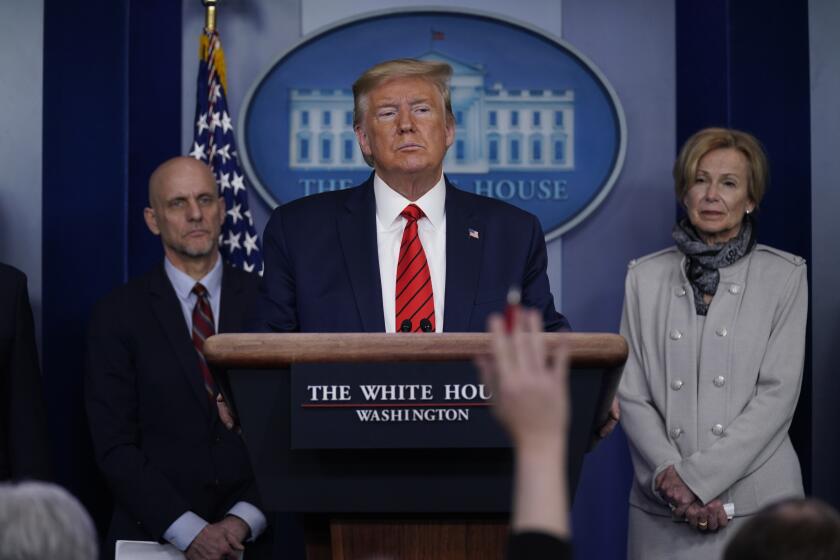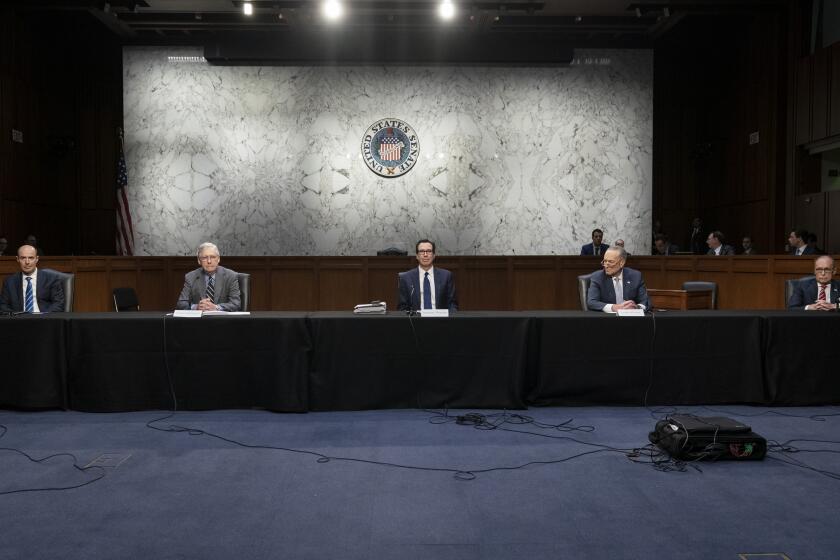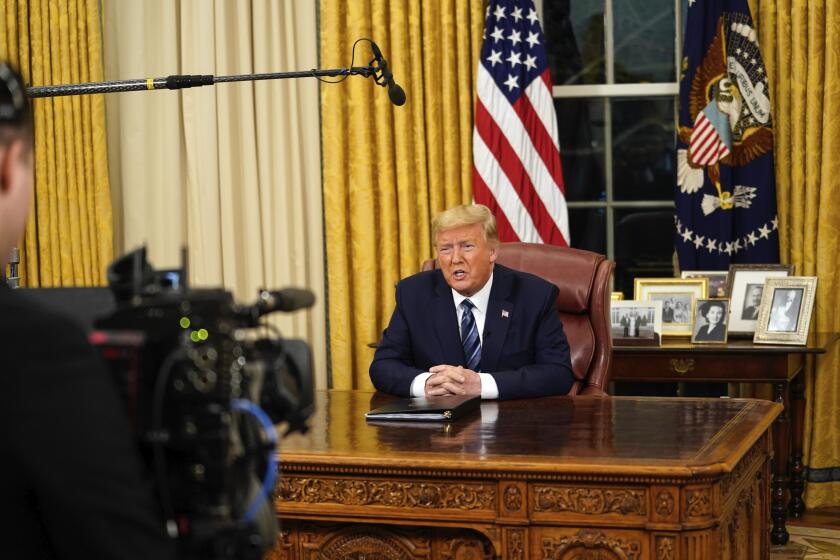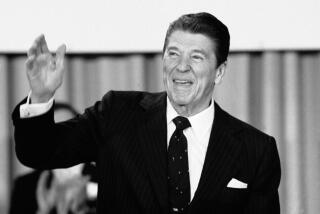Column: The New Deal has lessons for the coronavirus crisis â but not the ones you think
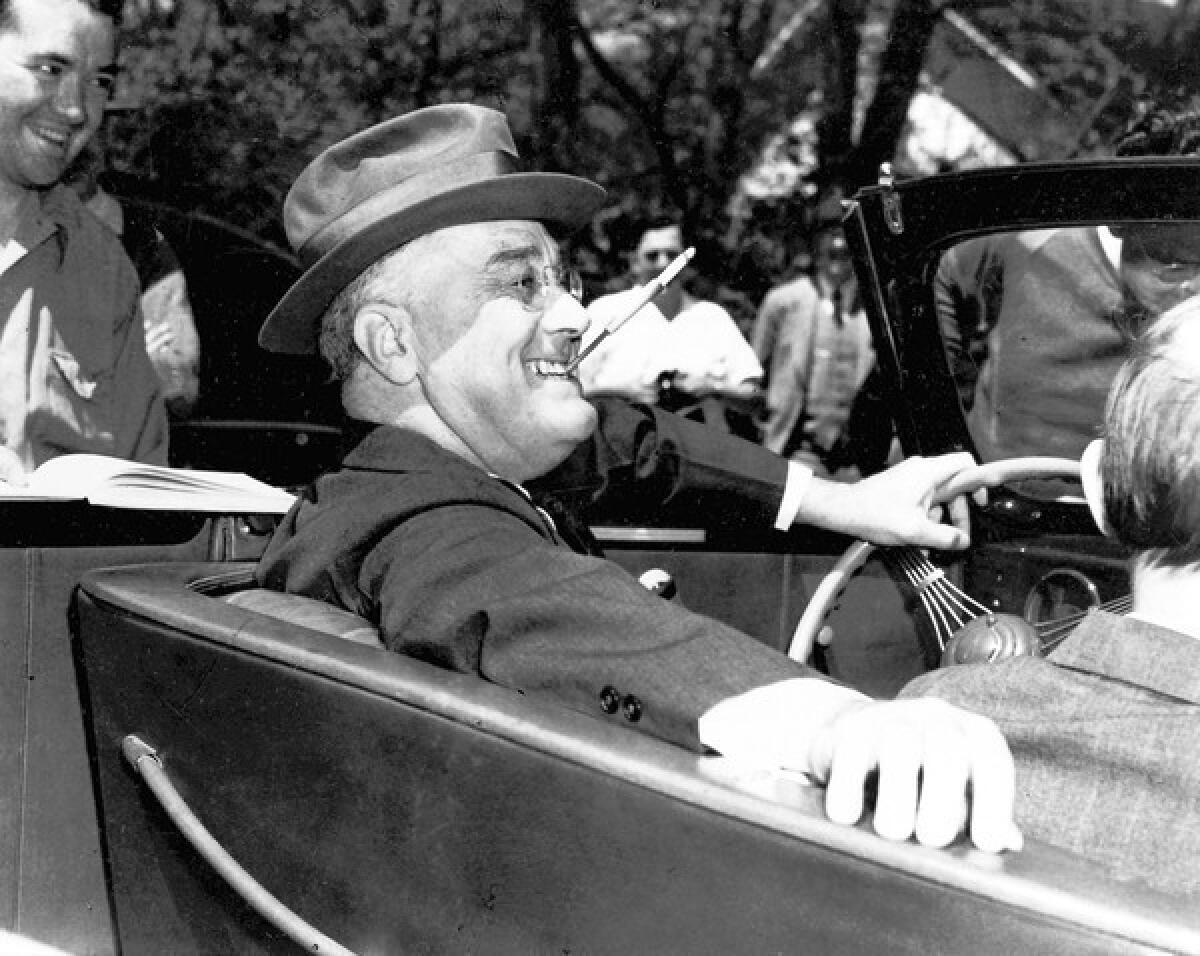
As a student of the New Deal, Iâm often asked whatâs most surprising about what I learned.
Here it is: Most people are wrong about Franklin Rooseveltâs goals. Until it was drawing to a close, his New Deal was not primarily aimed at jump-starting the faltering economy, although he hoped it would do so.
His policiesâ most important components, instead, aimed to alleviate financial hardship for individuals and families, keeping them fed, clothed and sheltered to give the economic cycle time to right itself.
You and I cannot afford to equip ourselves with two rounds of ammunition where three rounds are necessary.
— Franklin D. Roosevelt, 1938
Thatâs an important model for the decision-makers working on the U.S. governmentâs response to the coronavirus crisis. They should be focused on the immediate goal of protecting American households from the hardships of lost jobs. Setting the stage for a resumption of economic activity is important, too, but at this very moment itâs secondary.
Thatâs the flaw in the Senate Republicansâ stimulus bill as its details emerged over the weekend. Itâs been far too focused on help for corporations that can be put off until later, and doesnât deliver enough for the average American household.
Thatâs also the focus of Democratic objections to the bill. According to reports Sunday, Democratic pushback had persuaded Senate Majority Leader Mitch McConnell at least to improve direct cash benefits for the lowest-income households. But the bill as described still didnât do enough for them.
The term âsocialismâ has been enjoying something of a vogue lately, typically used to describe policies that were part of American mainstream politics as recently as the 1980s.
The core of the bill, which was rejected late Sunday but continued to be the subject of bipartisan negotiations late into the night, was still hundreds of billions in bailouts for corporations. Democrats complained that it provided for inadequate oversight over how they spend the money in that it lacked total bans on stock buybacks, limits on corporate executive raises and guarantees of paid sick leave for workers.
Making American households whole is not merely a moral imperative, but necessary to keep the economy from spiraling downward even further.
As Nobel economist Paul Krugman noted over the weekend, âonly part of what weâre facing is a conventional recessionâ amenable to fiscal and monetary policy. âThe rest of it is more like a natural disaster, where the governmentâs role is to help families avoid economic hardship, not put them back to work.â
In other words, the GOP proposal is the wrong thing at the wrong time. Thatâs the lesson of FDRâs New Deal, starting with his inauguration in March 1933. Letâs take a look.
Rooseveltâs program wasnât devoid of attempts at economic stimulus. Through the National Industrial Recovery Act, it tried to place limits on competition (on then-widely accepted theory that wasteful competition had weakened the economy) and to oversee corporate managements to make sure they devoted their energies to keeping workers employed.
Headed by the histrionic General Hugh Johnson, the National Recovery Administration issued window placards embossed with a blue thunderbird to signify their compliance with its standards. Johnson railed in public rallies against enemies of recovery he labeled âchiselers,â âcheats,â and âslackers ... gorged with paper profits.â Time magazine named Johnson its Man of the Year for 1933.
The truth was, however, that suppressing competition only benefits powerful incumbents in industry. The NRAâs enforcement of its own âcodesâ was spotty, empowering the powerful even more. The Supreme Court outlawed the NRA in 1935, but by then it was a spent force and Johnson was out of office.
Roosevelt, menwhile, turned to the task of succoring American families at the very outset of the New Deal. His first idea was the Civilian Conservation Corps, or CCC, which he presented to his economic advisors in week two of his administration.
In recent days, alarm about the economic impact of the novel coronavirus have turned conservatives who weeks ago were boasting about the shrinking of the U.S. government into raving Keynesians, proclaiming the virtues of deficit-financed economic stimulus.
The CCC ultimately was launched with a goal of recruiting a quarter-million young men selected from relief rolls in cities and rural communities. They were paid $1 a day plus lodging and food â low wages but better than relief payments â to turn Americaâs wilderness into working infrastructure. Up to $25 of every monthâs wages were to be paid directly to the recruitâs family at home.
By July there were 275,000 CCC âboysâ in 1,300 camps, eventually building 125,000 miles of road, 47,000 bridges, and planting 3 billion trees. The CCC would inspire lasting affection among its âboysâ while knitting a generation of young Americans into a patriotic fabric that would be readied, ten years later, for war.
Later in 1933 came the Public Works Administration, headed by Interior Secretary Harold Ickes and the Civil Works Administration, under Rooseveltâs top aide Harry Hopkins.
The PWA was devoted to major projects, from post offices to sewers, waterworks and government office buildings. PWA projects are still part of the American landscape â from Grand Coulee Dam in Washington state to LaGuardia Airport and the Triborough Bridge in New York City.
The PWA rebuilt 536 school buildings damaged in the Long Beach, Calif., earthquake of March 10, 1933, and created the 127-mile Overseas Highway connecting Key West to the Florida mainland.
The CWA concerned itself with smaller game, though still with projects important enough that they might have been built by their communities even if there were not workers desperate for jobs. Some crossed the line into PWA-scale construction (causing a rift between Ickes and Hopkins), including roadbuilding, water and sanitary systems and general cleaning up for schoolhouses, and swimming pools and playgrounds.
The rift between the experience of those able to work from home and those in the service sector, now out of work, shows how the coronavirus outbreak will only exacerbate income inequality in America.
At its peak, the CWA employed more than 4 million Americans, sustaining 20 million family members with income and instilling a sense of pride that had been sapped by extended unemployment. Hopkins cherished a remark uttered by the wife of one of these workers: âWe arenât on relief anymore, my husbandâs working for the government.â
The works program most closely identified with the New Deal was the Works Progress Administration, or WPA. For Hopkins, who had been trained in social work, the virtue of the WPA and all these other programs was that they put food on the table without subjecting their enrollees to demeaning and intrusive means-testing by social workers.
Hopkins brushed off criticism that some of the projects were mere make-work or research projects, rather than lasting productions â one politicianâs investigation of the WPA added the term âboondoggleâ to the political lexicon, drawn from midwestern slang denoting small-scale handicrafts.
âGod damn it!â Hopkins exploded at a press conference. âHere are a lot of people broke and we are putting them to work making researches of one kind or another, running big recreational projects where the whole material costs 3% and practically all the money goes for relief. ... As a matter of fact, we have not done enough.â The point, he felt, was to distribute the maximum relief to the largest number of Americans with the least indignity.
But that differed from the Keynesian deficit-funded economic pump-priming customarily identified with the New Deal. Government economists familiar with the work of John Maynard Keynes estimated in 1935 that sustainable recovery would require $5 billion to $6 billion in annual federal deficits over the next three years.
The steps Trump should take on the virus crisis are clear. Why isnât he taking them?
But the deficit never exceeded $4.3 billion in that period (it reached that mark in 1936 and fell to $2.2 billion the following year). Not until 1941 would the deficit, driven by preparation for war, reach even the lower end of what economists had called for.
Keynesâ argument that government deficit spending should substitute for private investment when the latter declined was not widely known in the U.S., even though he had been a prominent economic thinker in Europe for 15 years.
Keynes and Roosevelt had met once, briefly, in 1934, and both came away from the encounter unimpressed by the other. Fiscal austerity, which had been the watchword of the Hoover administration and even held sway within the Roosevelt White House, remained economic orthodoxy in the U.S.
To the extent that deficit-financed pump-priming was part of the New Deal, it was almost accidental: New Deal projects did keep money in circulation and kept aggregate demand afloat, and it was deficit-financed. But the primary goal for the New Dealers was to keep households sustained for the duration.
That only changed in 1938, after the incipient recovery was derailed by a new recession. The new slump goaded FDR into action. In April he called for a relief program of nearly $4 billion, and for the first time put it in the context of stimulus.
âYou and I cannot afford to equip ourselves with two rounds of ammunition where three rounds are necessary,â he told the public in a fireside chat. There would be more money for the WPA and the CCC, and hundreds of millions for slum clearance, public works, highway construction, and flood control. An alarmed Congress passed the plan before the end of June, and a lasting recovery was underway.
The model for helping American households through an elemental crisis was established nine decades ago. The practice of American government in the 21st Century, however, is to ignore the lessons of the past. Letâs hope it sheds this habit now.
More to Read
Inside the business of entertainment
The Wide Shot brings you news, analysis and insights on everything from streaming wars to production â and what it all means for the future.
You may occasionally receive promotional content from the Los Angeles Times.
